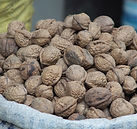Foods That Interact With the ECS
There are many different foods and plants that contain cannabinoid-like compounds that affect your body's endocannabinoid system. They interact with CB1 and or CB2 receptors or inhibit the breakdown of cannabinoids in the body.

Chocolate
Chocolate contains fatty acid derivatives which inhibit the FAAH enzyme. The FAAH enzyme is responsible for breaking down the endocannabinoid AEA, anandamide which mimics THC.

Carrots
Carrots contain a compound called falcarinol. This compound interacts with both CB1 and CB2 receptors and undergoes an alkylation reaction at the CB1 receptor.

Echinacea
Echinacea has been shown to contain N-alkylamides (alkamides). Certain N-alkylamides from Echinacea have been shown to interact functionally with the human CB2 receptor. CB2 receptor-binding N-alkylamides show similar anti-inflammatory effects as anandamide (AEA).

Black Pepper
Black pepper contains beta-caryophyllene (BCP). BCP is a cannabinoid that acts specifically on the body’s CB2 cannabinoid pathways. BCP is also found in essential oils of a variety of plants, including rosemary, hops, cloves, and cannabis.

Bovine Milk
While the levels of AEA (anandamide) are negligible, bovine milk has been found to contain 2-AG, an endocannabinoid. Be aware, higher boiling points through pasteurization can hurt the integrity of the endocannabinoids. 2-AG is also found in abundant supply in human breast milk.

Hemp Seeds
Hemp seeds are the most abundant in a variety of cannabinoids. There are approximately 80 different phyto-cannabinoids in hemp seeds; the most noted are CBD, CBC, CBG, CBN. The entire endocannabinoid system is best fueled by hemp seed oil.


